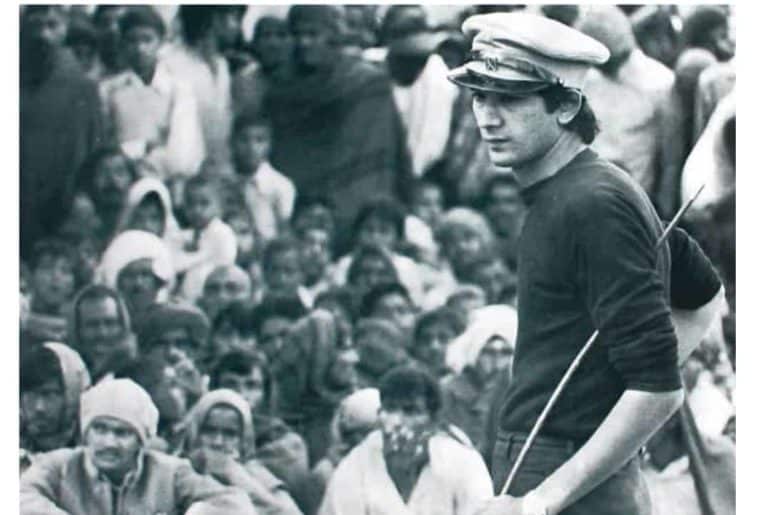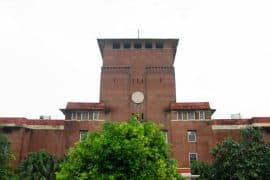Read how a politically stimulated University
of Delhi (DU) student became the icon
of cultural resistance in India.
As soon as you exit the Mandi House
metro station, one of the roads you might
come across is the Safdar Hashmi Marg,
which houses the famous Shri Ram Centre
for Performing Arts. Mandi House, home
to the prestigious National School of
Drama and other prominent cultural hubs,
acknowledged the fiercely rebellious artist
by naming a road after him, posthumously.
Safdar Hashmi is an indispensable figure
when it comes to cultural resistance
through art, specifically theatre art.
He pursued English Literature from St.
Stephen’s College and then got a Master’s
degree in English from DU. During his
post-graduation, he got associated with
Indian People’s Theatre Association
(IPTA), the cultural unit of Students’
Federation of India (SFI).
Hashmi soon left the body and founded Jan
Natya Manch, commonly abbreviated as
JANAM, as IPTA’s offshoot in 1973. When
Indira Gandhi was alleged to have rigged
the elections against Raj Narain, Safdar
produced a street play named Kursi, Kursi,
Kursi based on the questionable incidents
that took place during the 1967 elections.
The play made JANAM and Safdar Hashmi
immensely famous across the country.
In 1976, impacted by the exploitation
of labourers’ and workers’ conditions in
factories, Safdar Hashmi, along with five
other artists, directed a 13-minute-long
play titled Machine, depicting a situation
where factory workers were beaten up
by the security guards when they asked
for fairer working conditions. This play
instilled the conscience of people and
made them question the vicious cycle
of capitalism. It became so popular
that it was recorded and later remade
in several languages.
After Machine became a cult hit, there
was no looking back for Safdar Hashmi
and JANAM. JANAM got actively involved
with the issue of workers’ rights and,
within six hours of fare hikes by Delhi
Transport Corporation (DTC) buses, the
group directed and performed a nukkad
natak (street play) on the same. This was
followed by plays on various themes like
the distress of small peasants, religious
fascism, unemployment, inflation,
violence against women, etc. In the
short life of 34 years that he lived,
Safdar Hashmi gave 4000 performances
of 24 street plays.
It was a doomsday for the cultural
resistance movement when, on a chilly
winter morning, Safdar Hashmi was
attacked while performing a play in a
neighbourhood of Ghaziabad. Hashmi,
along with his fellow artists, was
performing a play for the candidate of
Communist Party of India (Marxist),
Ramachand Jha, when the Congress’
candidate, Mukesh Sharma, came and
asked him to evacuate the area to let his
rally pass. When Hashmi asked him to wait
until the play ended or to take a detour,
Mukesh and his goons got infuriated and
created a ruckus, vandalising and beating
the audience as well as the performers.
One labourer, Ram Bahadur, was killed,
and Hashmi, while trying to save his mates
and fellow artists, got hit by an iron rod.
He was fatally injured and got admitted
to a hospital but could not be saved. He
passed away the following day.
At the time of his death, he had earned the
stature of a hero amongst the proletariat
(workers, laborers and deprived citizens)
and artists. A huge crowd gathered to
witness his last rites. Incidentally, it was the
largest mobilisation after Independence
where people joined with a prior notice.
Today, Safdar Hashmi is a cult figure seen
as the symbol of Indian cultural resistance.
His life and legacy have continuously lived
beyond his own years, through art and
cinema. For instance, in 2008 Rajkumar
Santoshi directed Halla Bol starring Ajay
Devgn as an ode to Hashmi, who died
while performing a play titled Halla Bol!
In times of political unrest and democratic
upheaval, it is important for us, as
students in the hotspot of youth and
national politics to look back at those who
persistently utilised art to stand up for their
principles, voicing the need for justice and
revolutionary change.
Feature Image Credits: Telegraph India
Priyanshu
[email protected]




Comments are closed.